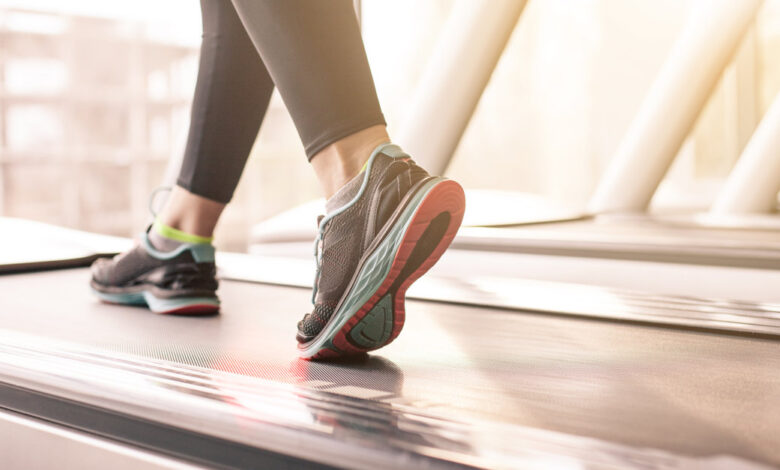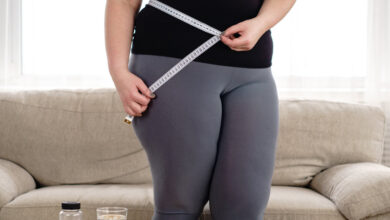Physical Activity in Diabetes Improves Blood Glucose Control

Physical activity in diabetes improves blood glucose control. Most of the effect of insulin happens at the muscle, and what is exercise or activity? It is the movement of muscles! This movement needs fuel and that fuel is glucose.
The Importance of Physical Activity in Diabetes
To improve control of your diabetes you need all the essential ingredients in your life – you may not get the balance straight away but work at it and you will. The right amount of nourishment and exercise, not too little and not too much, and you will have found the safest way to long-term health – living long and well with your diabetes.
Exercise is any activity that involves movement. It causes improvement in the way our bodies operate. It involves things we do every day as well as specific activities we usually call “exercise” (walking, jogging, gym etc.).
Unless our daily lives involve heavy physical work, the normal daily routine will not be enough activity for optimal health and wellbeing. Hippocrates said “walking is man’s best medicine”.
A lack of activity robs the body of an essential ingredient. You wouldn’t dream of not partaking of the other essential ingredients of life – food and water.
Physical activity in diabetes improves the body by placing stress or workload on the body. If this stress is at the right level of effort and is done often enough, the body will change to deal with it better. That is, if you start walking regularly and persist with it, you will find you can gradually walk further in a half hour and with less effort. To keep improving you need to walk further or faster so that your body keeps getting challenged.
If you are using weights to increase strength, over time you will find you can lift more weight and do more repetitions. This is the result of your body changing in response to the stress you are placing on it by doing this type of exercise.
The stress we are discussing here is stress on muscles and bones and is good for physical improvement. It is not related to a mental state that we tend to think of as “stress” although some people find the idea of starting an exercise programme very stressful.
If the exercise we do causes too much stress on the body, for example, by doing too much too often, then injury can occur. Overdoing things can mean that the body cannot keep up the repair and maintenance and damage results. This can lead to prolonged aches and pains, fatigue and injury.
A common mistake made by people starting an exercise programme is doing too much too soon. This results in pain, strain, sprain and no gain. If you haven’t done any exercise for a while remember – Start low and go slow.
Most of us can increase activity levels by increasing the amount we move during each day. For example:
- Walk up steps – don’t take lifts or escalators for one or two floors.
- Park the car as far as possible from the door at the supermarket car park (at least you’ll be guaranteed a parking space).
- Walk to the shop for milk or newspapers rather than driving.
- If you live in a house with steps, don’t save everything for one trip downstairs. Make an effort to go up and down those steps more frequently.
- If possible, walk with the children to and from school.
- If you catch a bus to work, walk a couple of bus stops further before you actually catch the bus.
The Benefits of Physical Activity in Diabetes
- A ½ hour brisk walk daily can reduce the incidence of diabetes by 30% and each extra kilometre walked per day on a regular basis reduces this incidence by another 6% per kilometre.
- Exercise and increased activity are helpful for reducing cholesterol levels and increasing HDL. It is important to increase daily activity and have a good regular exercise routine.
- If you have elevated blood pressure, regular exercise can help reduce blood pressure by as much as 30%.
- Exercise plays an important role in the prevention of osteoporosis. Weight bearing exercise will improve bone mass. Weight bearing exercises are those that work the muscles against gravity, such as walking, dancing, golfing, and tennis.
- Exercise independent of weight loss (meaning even if you lose no weight) improved BGL control and lowers HbA1c by 0.6%.
How Active do you Need to be?
- 3 hrs per week is for health and the prevention of progress of chronic disease.
- 3-5 hrs per week is for health, the prevention of progress of chronic disease and weight maintenance when you also control food intake.
- More than 5 hrs per week is for health, the prevention of progress of chronic disease and weight loss when you also control food intake.
For well controlled diabetes – do not let the sun set twice on inactivity.
By being more active you help to balance your lifestyle for improved health. Physical activity adds years to life and life to years. Many patients will tell me they are too old for the activity we propose and I often respond “we get old because of inactivity”.
Any form of physical activity in diabetes that improves the way the body operates is beneficial. Exactly which type of activity is best for you depends on your goals, your starting level of fitness and your limitations (both physical and lifestyle limitations).
It is important that you do the right type of physical activity for you, otherwise you will not get the results you want and you will not make physical activity a regular part of your life.
This is where a discussion with your doctor and exercise physiologist can remove barriers to activity and help you achieve one of the important “A’s in well controlled diabetes.
What about Inactivity? Is it Really Bad for us?
Mobile phones and remote controls rob us of opportunities to move. On average we use a remote control or mobile phone a minimum of 20 times a day. This means we move 20 x 20 metres less per day. That is 400 metres per day, and this equates to 146000 metres (146km) per year, so we miss out on about 25 hrs of walking per year.
Each 1 hr of walking costs our body about 250 calories BUT we are not doing that walking so we are not using those calories so we are not burning that fat. How much weight are we putting on because of this inactivity? A minimum 2kg per year!
Think about the time you spent being physically active in the last 7 days. Become more aware. Were you active most days? Were you active more than 3 hours per week? Is there room for improvement? Being active is a journey, not a destination. It must be continued for the rest of our lives. We do not stop being active because we grow old, we grow old because we stop being active.
Your GP, exercise physiologist are well positioned to write activity prescriptions and help you optimise your activity level.
Are you moving enough to help control your blood glucose, blood pressure, weight, strength, endurance? For physical activity in diabetes you need:
- 10 minutes per day of stretches,
- 1 hour per week of resistance strengthening activity, and
- 3 to 5 hours per weeks of moderate intensity aerobic activity.
- To be less sedentary. Get active!
Conclusion: Understanding Physical Activity in Diabetes
- Physical activity in diabetes improves the body by placing stress or workload on the body. This stress on the body needs to be progressive.
- Exercise and increased activity are helpful for reducing cholesterol levels and increasing HDL.
- If you have elevated blood pressure, regular exercise can help reduce blood pressure by as much as 30%.
- Weight bearing exercise will improve bone mass.
- Exercise independent of weight loss (meaning even if you lose no weight) can improve BGL control and lowers HbA1c by 0.6%.



